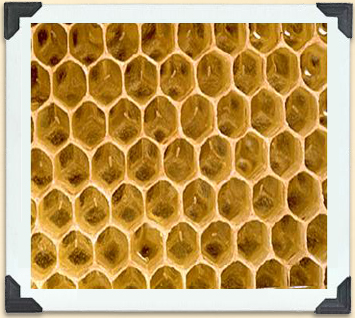Life in a Hive

Eggs develop in the cells of a brood box.
© University of Manitoba
Stages of Bee Development
Egg
The queen lays one egg per cell. Knowing what the colony needs to survive, the worker bees have built appropriate cells for the queen. In most of the cells, she lays a fertilized egg that will develop into a worker bee. In cells that are slightly larger than the worker cells, she lays unfertilized eggs that will grow into drones.
The egg stage of development lasts only three days.
Larva
After three days, the egg hatches into a worm-like form called a larva. The worker bees feed the larva royal jelly for the first few days and then switch to honey and pollen. An exception to this is a future queen: this larva continues its diet of royal jelly. A larva eats almost constantly and grows quickly. Within just five days, it grows 1 500 times larger than its original size. At this point, worker bees cap the cell with wax and the larva spins a cocoon around itself.
The larval stage lasts about six days. It's shorter for the queen, longer for the worker bees and longest for the drones.
Pupa
In the pupa stage, the tiny organism hidden under the capping is starting to look like an adult bee. Its legs, eyes and wings develop and, finally, the little hairs that cover its body grow.
After seven to fourteen days in this stage, depending on the type of bee, the now adult bee chews its way out of the cell. This stage is shorter for the queen, longer for the worker bees and longest for the drones.








